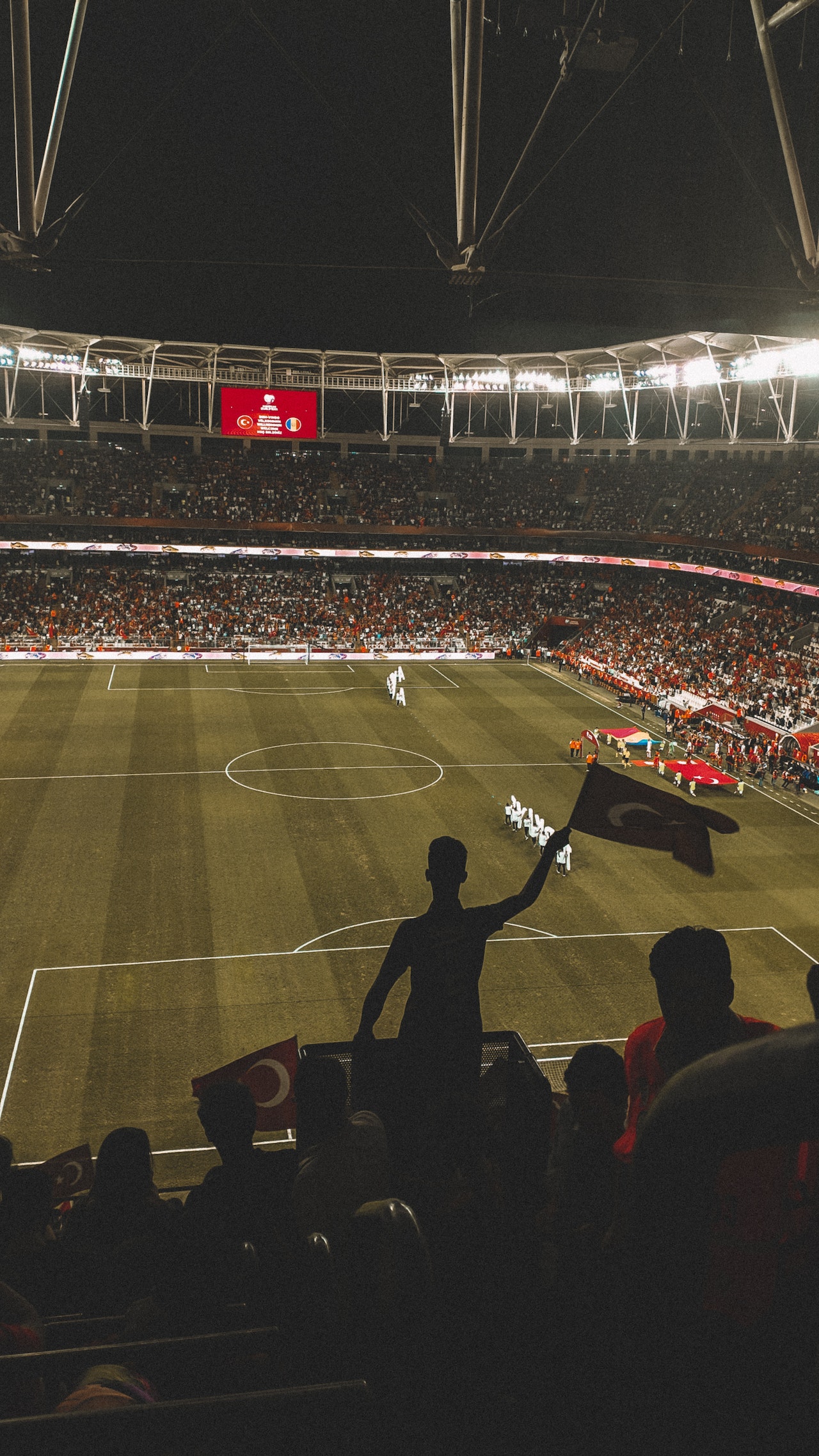Building Football Stadiums - A Guide For Dummies
But how are these stadiums built? In this article, we'll take a closer look at the process of building football stadiums, from planning and design to construction and maintenance.
Author:Henrik SchmidtReviewer:Gabriel MartinezJan 05, 202335 Shares486 Views

Footballstadiums are impressive structures that have captivated millions of people around the world. From the awe-inspiring Camp Nou in Barcelonato the historic Wembley Stadium in London, footballstadiums have become cultural landmarks that represent the cities and countries where they are located.
But how are these stadiums built? In this article, we'll take a closer look at the process of building football stadiums, from planning and design to construction and maintenance.
Building Football Stadiums
The first step in building a footballstadium is planning and design according to Commercial Architecture Magazine guide on building process. This process involves a collaboration between architects, engineers, and other experts who work together to create a blueprint for the stadium.
The planning phase typically begins with a feasibility study, which determines whether a new stadium is necessary and financially viable. Factors such as the stadium's location, size, and capacity are taken into consideration during this phase.
Once the feasibility study is complete, the design phase begins. This involves creating detailed blueprints that outline the stadium's structure, seating arrangement, and other features.
Architects and engineers use advanced software to create 3D modelsof the stadium, which can be used to simulate the construction process and identify any potential issues or challenges.
Construction
After the planning and design phases are complete, construction can begin. This phase typically involves several stages, including site preparation, foundation construction, and the erection of the stadium's superstructure.
Site preparation involves clearing the land and preparing it for construction. This can involve removing trees, rocks, and other obstacles, as well as grading the land to ensure that it is level.
The next step is foundation construction, which involves laying the groundwork for the stadium's superstructure. This typically involves pouring concrete foundations and erecting structural steel or concrete columns.
Once the stadium's foundation is in place, its superstructure can be built. This typically involves the erection of steel or concrete beams and columns, which are used to support the stadium's seating and other structures.
As the superstructure is built, workers also install the stadium's electrical and plumbing systems, as well as any other features such as video screens or sound systems.
Finishing Touches
Once the construction phase is complete, the stadium is almost ready for use. However, there are still several finishing touches that need to be added before the stadium can be used for football matches. These include the installation of seats, toilets, concessions, and other amenities.
Seating is one of the most important features of any footballstadium, and it typically takes several weeks to install. The seats are usually made from a durable material such as plastic or metal, and they are designed to be comfortable and easy to clean.
Toilets and concessions are also important features that are installed during this phase. These facilities are typically located throughout the stadium to ensure that they are easily accessible to fans.
Maintenance
After the stadium is complete, it requires ongoing maintenance to keep it in top condition.
This involves regular cleaning, repair, and maintenance of the stadium's various components, such as the seating, electrical systems, and plumbing. In addition, the stadium's exterior must be kept clean and free of debris, and any damage must be repaired promptly.
Regular maintenance is essential to ensure that the stadium remains safe and functional. Stadiums are designed to withstand heavy use, but regular wear and tear can cause damage over time.
By performing regular maintenance and repairs, stadium owners can ensure that the stadium remains in good condition for years to come.
Sustainability And Environmental Considerations
As concerns about climate change continue to grow, sustainability and environmental considerations are becoming increasingly important in the construction of footballstadiums.
Stadium owners and builders are exploring ways to reduce their environmental impact by using sustainable materials, incorporating renewable energy sources, and reducing waste.
Security And Safety
Safety and security are paramount when it comes to building footballstadiums. Stadiums must be designed and constructed to withstand the demands of large crowds, and they must also be equipped with state-of-the-art security systems to ensure the safety of fans and playersalike.
This involves the installation of cameras, alarms, and other security features, as well as the development of emergency response plans in case of an incident.
Technology And Innovation
Technology and innovationare rapidly changing the way footballstadiums are built and operated. From advanced sound and lighting systems to virtual reality experiences, stadiums are using cutting-edge technology to enhance the fan experience and improve operations.
Stadium owners and builders are constantly exploring new ways to incorporate technology and innovation into the construction and operation of footballstadiums.
Accessibility And Inclusivity
Footballstadiums must be designed with accessibility and inclusivity in mind to accommodate fans of all abilities. This involves providing accessible seating and facilities, as well as ensuring that the stadium is easy to navigate for those with mobility impairments.
Stadiums are also exploring ways to make the fan experience more inclusive by providing amenities such as sensory rooms and quiet spaces for those with sensory processing disorders.
Health And Wellness
The health and wellness of players and fans are essential concerns for footballstadiums. Stadiums are exploring ways to promote physical activity and healthy habits through the design of walking paths, healthy food options, and other amenities.
In addition, stadiums are implementing measures to ensure that players are safe on the field, such as high-quality turf and advanced medical facilities.
Fan Engagement And Community Involvement
Footballstadiums are more than just places to watch matches; they are also community gathering spaces where fans can come together to support their team. As such, stadiums are exploring ways to enhance fan engagementand community involvement.
This involves providing opportunities for fans to interact with players, offering community events and programs, and supporting local initiatives and charities. By fostering a sense of community, footballstadiums can become even more meaningful and important to their fans.
People Also Ask
What Type Of Structure Is A Stadium?
Most modern stadiums are made with steel frames and precast concrete steps, walls, tiers, and sections for moving around. Milbank has been developing, making, and installing precast concrete products with skill for more than 75 years.Milbank is a well-established player in the stadium-building sector.
Does FIFA Build Stadiums?
The first step in building something is to dig it up. This is done before the foundation, enclosure, infrastructure, and playing field are built.
Often, bowl stadium seating is constructed underground. The excavation work might begin 50 feet below the surface. Similar to how a structure is constructed, the framework and foundation are laid initially.
Are Football Stadiums Fake Grass?
An enclosure with a wide area for sporting events and other demonstrations and lots of spectator seating. The word comes from the stade, a Greek unit of length used to describe the distance traveled in the first Greek footraces (about 600 feet [180 meters]).
Conclusion
Building a footballstadium is a complex process that involves planning, design, and construction. From the initial feasibility study to the finishing touches, every step of the process requires careful consideration and attention to detail.
Once the stadium is complete, ongoing maintenance is required to ensure that it remains in top condition.
Despite the challenges

Henrik Schmidt
Author
Henrik Schmidt is a dedicated writer focusing on sports, betting, and various entertainment aspects related to the sporting world. With a passion for exploring the intersections of sports and entertainment, Henrik brings a unique perspective to his articles. His expertise in these areas ensures that readers receive informative and engaging content, making him a valuable contributor to the sporting community.

Gabriel Martinez
Reviewer
Gabriel Martinez is a respected author at Tennessee Independent, renowned for his expertise in covering News and Sports topics. With a comprehensive understanding of current events and a knack for delivering accurate and engaging content, Gabriel provides readers with insightful analysis and compelling narratives. His dedication to factual accuracy and commitment to delivering authoritative content make him a trusted source for news and sports enthusiasts on Tennessee Independent.
Latest Articles
Popular Articles

